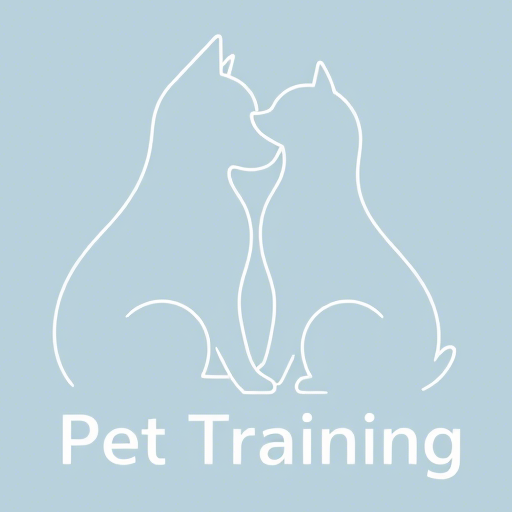Advanced dog training for agility is all about fine-tuning your furry friend’s natural abilities to tackle obstacles with finesse. In other words, it’s not just about running fast; it’s about building a strong bond and enhancing coordination through specialized techniques. For instance, I recall training my own dog, Max, and watching him transform from a clumsy pup into a agile star—it’s a journey filled with laughs and proud moments. Above all, safety and fun should always come first in any agility program.
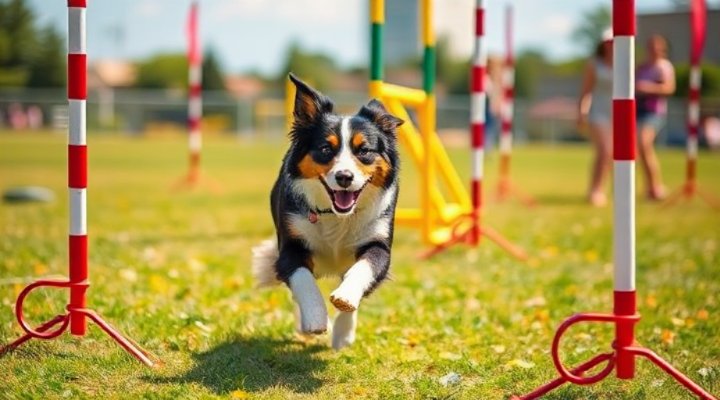
Understanding the Basics of Advanced Dog Training for Agility
Before diving into complex maneuvers, it’s crucial to grasp the fundamentals of advanced dog training for agility. This involves teaching your dog to respond to cues quickly and accurately, which lays the groundwork for speed and coordination. Similarly, basic obedience commands like ‘sit’ and ‘stay’ are essential, as they help in controlling your dog during high-energy activities. For example, incorporating short training sessions into your daily routine can prevent burnout and keep your dog engaged. Meanwhile, always use positive reinforcement to build confidence; after all, a happy dog is a fast learner!
Moreover, understanding your dog’s breed and physical limitations is key in advanced dog agility training. Certain breeds, like Border Collies, excel in agility due to their high energy and intelligence, but any dog can benefit with the right approach. Consequently, tailor your methods to suit your dog’s needs—for instance, smaller dogs might need lower jumps, while larger breeds require more space. To clarify, this isn’t about pushing limits but enhancing natural skills. If you’re new to this, consider checking out our guide on Petsmart dog training classes for beginners to build a solid foundation.
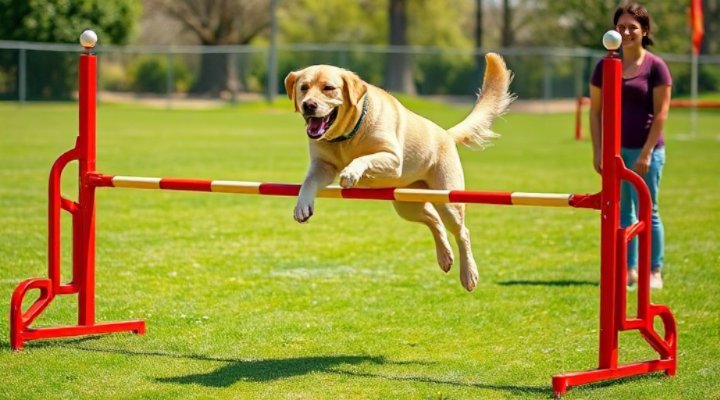
Key Techniques for Improving Speed in Agility Training
Speed is a vital component of advanced dog training for agility, and it can be boosted through targeted exercises. Firstly, focus on sprint drills that encourage your dog to run short distances at full pace. For instance, set up a straight line of low hurdles and reward your dog for quick completions. Additionally, incorporating fetch games with agility twists—like throwing a toy over a jump—can make training fun and effective. As a result, your dog learns to associate speed with positive outcomes, building momentum over time.
Furthermore, consistency in training schedules plays a big role in developing speed. Practice regularly but keep sessions short to maintain high energy levels. On the other hand, avoid overtraining, as it can lead to fatigue or injury. For example, I used to train Max three times a week, mixing in rest days to let his muscles recover. Most importantly, use high-value treats or toys as motivators; this keeps your dog eager and fast on their paws. If you need more ideas, our article on advanced dog training techniques offers additional professional insights.
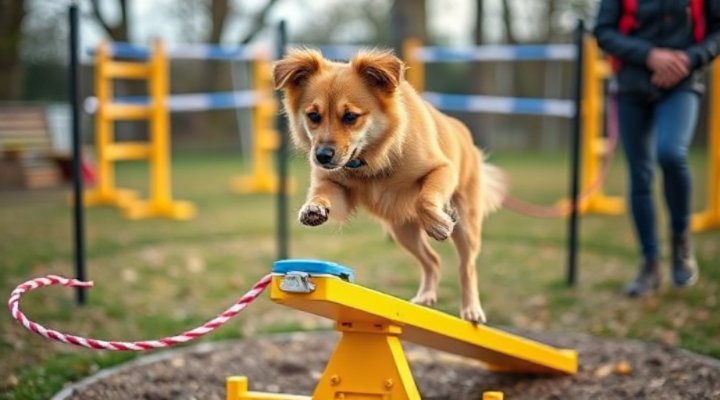
Enhancing Coordination Through Obstacle Courses
Coordination is equally important in advanced dog training for agility, as it helps dogs navigate complex courses smoothly. To start, introduce simple obstacles like tunnels and weave poles, gradually increasing difficulty as your dog improves. For example, begin with wide-spaced poles and slowly narrow the gaps to challenge their agility. Likewise, use verbal cues and hand signals to guide your dog, reinforcing their ability to make quick decisions. This not only improves physical coordination but also mental sharpness.
In addition, practicing balance exercises can significantly boost coordination. Activities like walking on narrow planks or balancing on seesaws teach dogs to control their movements precisely. Subsequently, this translates to better performance in agility runs. But, however, always supervise these activities to prevent accidents. During my training with Max, I saw how these exercises made him more confident on tricky obstacles. For more detailed guidance, the American Kennel Club’s agility resources provide excellent tips on safe and effective methods.
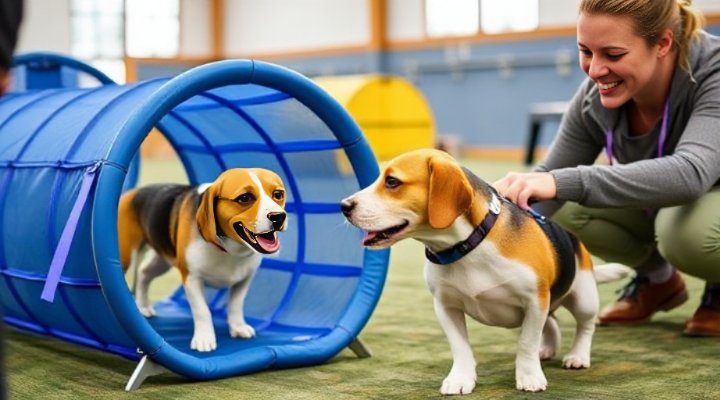
Incorporating Professional Tips for Advanced Agility Training
Professional trainers often emphasize the importance of variety in advanced dog training for agility. Rotate between different obstacles and training environments to keep your dog adaptable and engaged. For instance, take your sessions to a park or a dedicated agility field to simulate competition settings. Moreover, work on strengthening exercises, such as hill runs or core workouts, to build the muscle needed for speed and coordination. Consequently, your dog will handle courses with greater ease and efficiency.
Another key tip is to focus on timing and rhythm in agility drills. Use metronomes or count beats to help your dog develop a consistent pace. Similarly, video recording your training sessions can provide insights into areas for improvement. After that, review the footage together—yes, dogs can learn from visual cues too! Above all, patience is essential; progress might be slow, but every small step counts. If you’re looking for certified programs, our post on service dog training near me discusses how to find quality training options that can be adapted for agility.
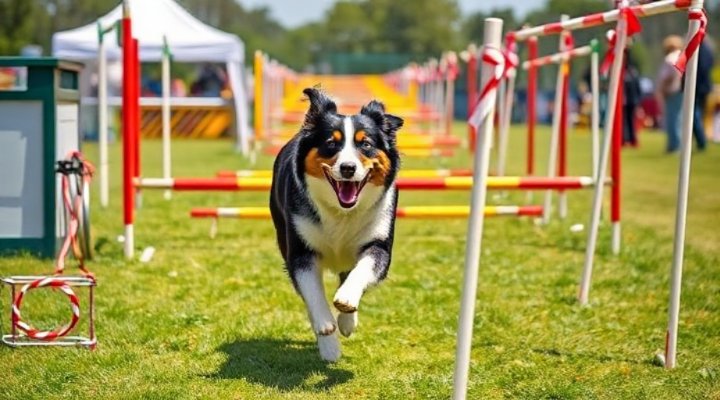
Common Mistakes to Avoid in Dog Agility Training
Even in advanced dog training for agility, it’s easy to fall into common pitfalls that hinder progress. Firstly, avoid pushing your dog too hard too fast, as this can cause stress or injuries. For example, introducing high jumps before your dog is ready might lead to fear or avoidance. Instead, progress gradually and celebrate small victories. Secondly, neglecting warm-ups and cool-downs is a mistake; always include stretches or light walks to prepare your dog’s muscles. As a result, you’ll reduce the risk of strains and keep training sessions productive.
Furthermore, inconsistency in commands can confuse your dog and slow down their learning. Use the same words and gestures each time to reinforce behavior. On the other hand, don’t forget to make training fun—if it feels like a chore, your dog might lose interest. During my journey, I learned that mixing in play breaks kept Max excited about agility. To sum up, focus on building a positive experience, and refer to resources like the AVMA’s dog training guidelines for expert advice on ethical practices.
Conclusion: Building a Strong Foundation for Agility Success
In conclusion, advanced dog training for agility is a rewarding endeavor that enhances your dog’s physical and mental abilities. By focusing on speed, coordination, and professional techniques, you can help your canine companion shine in any setting. Likewise, remember that every dog is unique, so tailor your approach to their personality and pace. Most importantly, enjoy the process—the bond you build through training is priceless. For further reading, explore our site for more articles on dog care and training.
Related Keywords: dog agility training, canine coordination, speed training for dogs, agility obstacles, competitive dog training, recreational agility, dog fitness, obedience training, professional dog training tips.
